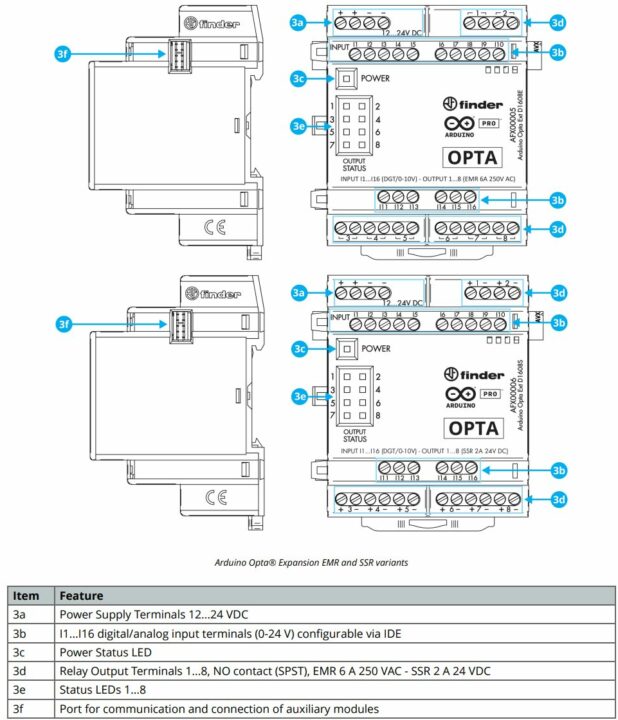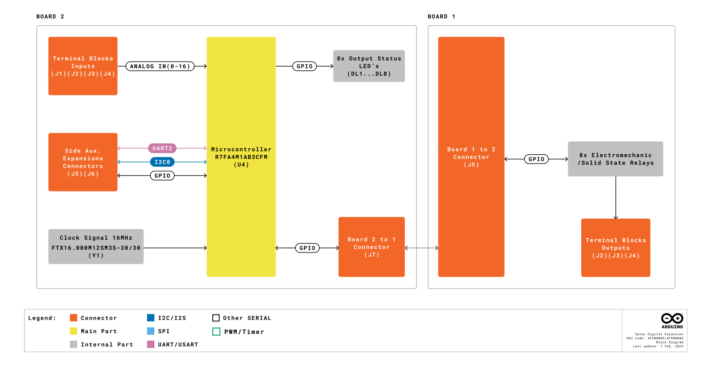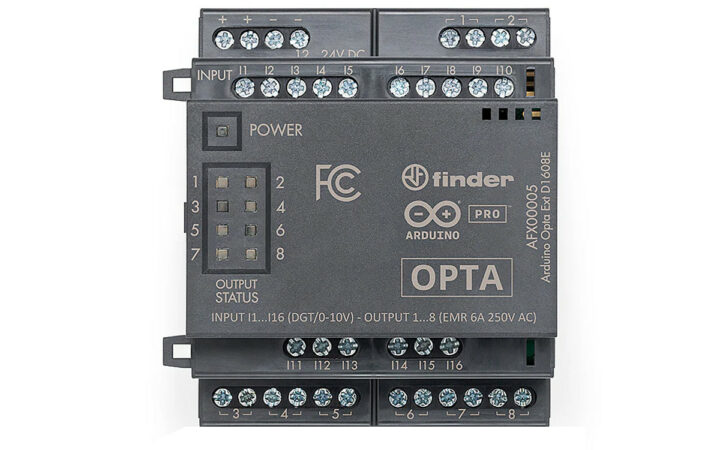Arduino has recently announced two new expansions to their Arduino Pro Opta PLC series – the Arduino Pro Opta Ext D1608E and Arduino Pro Opta Ext D1608S, the main difference between the two is that the D1608E features 8 electromechanical relays (EMRs) whereas the D1608S features solid-state relays (SSRs).
Other than that both expansion modules have 16x programmable I/Os (0-24 V digital / 0-24 V analog) which doubles the number of I/Os we have seen on the Opta micro PLC. Both are compatible with the Arduino IDE and the PLC IDE and are easy to install on a DIN rail. These features make it suitable for control, monitoring, and predictive maintenance applications.
Previously we have seen Arduino launch a PLC Starter Kit for those who want to get started with PLCs. Additionally, we have written about ESP32-powered PLCs, Raspberry Pi-powered PLCs, and more. Feel free to check those out if you want customizable PLC products.
Arduino Pro Opta Series D1608E and D1608S specifications
- MCU- Renesas Electronics R7FA4M1AB3CFM with 48 MHz Arm Cortex-M4 core, 256-KB code flash memory, 32-KB SRAM, USB Controller, ADC, DAC, and more
- Input
- Configurable digital/analog input: 16
- Digital Operational Range: 0-24 V
- Analog Operational Range: 0-24 V
- Analog Resolution: 14 bit
- Relays
- Arduino Opta Ext D1608E (AFX00005):
- Number of relays: 8
- Relay rated voltage: 250 VAC
- Maximum current per relay: 6 A
- Maximum peak current per relay: 10 A
- Arduino Opta Ext D1608S (AFX00006):
- Number of relays: 8
- Relay rated voltage: 24 VDC
- Maximum current per relay: 2 A
- Maximum peak current per relay: 50 A
- Arduino Opta Ext D1608E (AFX00005):
- Power Supply – 12-24 VDC
- IP Protection – IP20
- Dimensions – 89 x 70 x 62 mm
- Weight – 190 grams
The company says that up to 5 snap-on modules can be managed to multiply and mix a set of I/Os with seamless detection snap them right next to your Opta base module and use the I/Os as native Opta resources. For programming the company said that the PLC IDE can be utilized for IEC 61131-3 PLC languages, other than that it can be programmed with Arduino IDE and Arduino CLI. Another advantage of using an Arduino model is its support for the Arduino IoT Cloud dashboards for real-time remote monitoring and OTA firmware updates.


For simplicity and ease of use, the company provides a block diagram and specifications list that can be found on the datasheet of the device. Not only that they also offer full technical documentation, tutorials, and much more on their documentation page.
Both Arduino Pro Opta expansions can be purchased on the Arduino Store with the D1608E is going for $136.80 and the D1608S for $146.40.
Debashis Das is a technical content writer and embedded engineer with over five years of experience in the industry. With expertise in Embedded C, PCB Design, and SEO optimization, he effectively blends difficult technical topics with clear communication
Support CNX Software! Donate via cryptocurrencies, become a Patron on Patreon, or purchase goods on Amazon or Aliexpress





